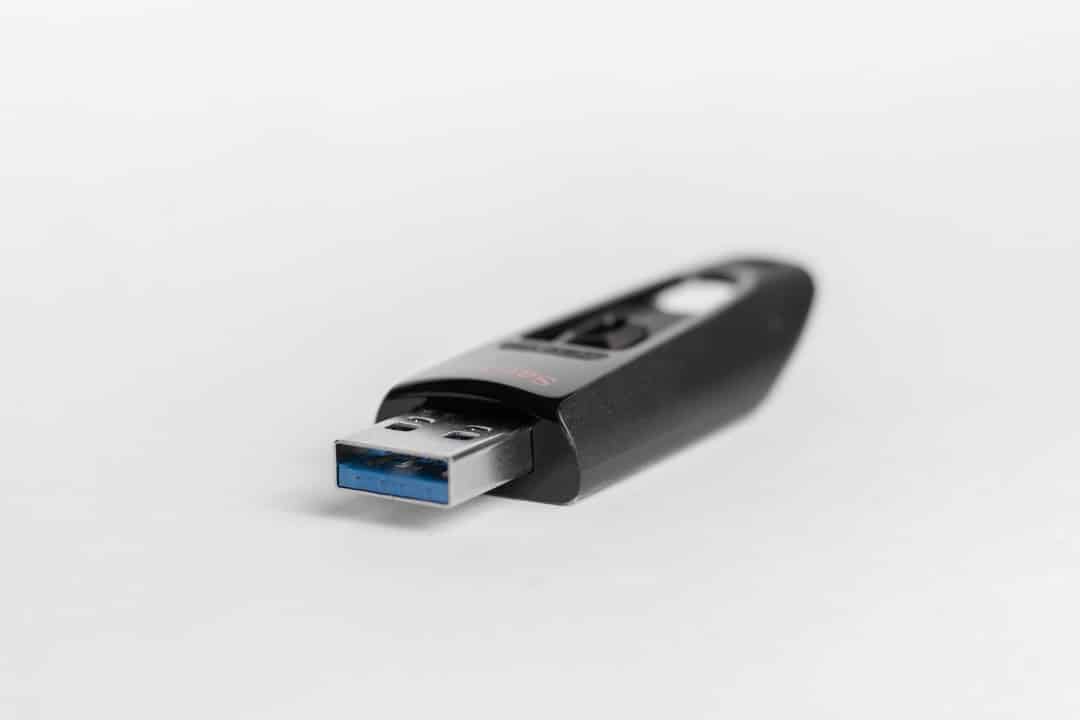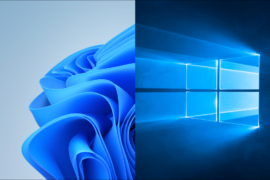This step-by-step guide details how to create a bootable USD flash drive for Windows 10 in various ways. However, the methods have not changed much compared to the previous version of the operating system: just as before, there is nothing complicated in this task, except perhaps for possible nuances associated with booting EFI and Legacy in some cases.
The article describes both the official method to make a bootable USB flash drive with the original Windows 10 Pro and Home x64 and 32-bit using the proprietary Microsoft Installation Media Creation Tool, as well as other methods and free programs that will help you burn an installation USB drive from an ISO image with Windows 10 for OS installation on UEFI and Legacy systems, on GPT and MBR disk or system recovery.
Read also: Can’t connect to this Wi-Fi network on Windows 10 – how to fix it?
Bootable USB Flash Drive For Windows 10 in an official way
Immediately after the release of the final version of the new OS, the Windows 10 Installation Media Creation Tool (today Microsoft Media Creation Tool) appeared on the Microsoft website, which allows you to create a bootable USB flash drive for the subsequent installation of the system, automatically downloads the latest released final version of Windows 10 to the drive and creates a USB drive for boot in both UEFI and Legacy mode, suitable for GPT and MBR HDD and SSD disks.
It is important to note here that you get the original Windows 10 Pro (Professional, including for workstations), Home (Home), Home for one language from the Microsoft website with this program. And in full measure, such a flash drive is suitable if you either have a Windows 10 key or already have licensed Windows 10 or 8.1 installed on your computer or laptop.
Now you want to perform a clean installation (in this case, skip entering the key during installation, by clicking “I do not have a product key,” the system is activated automatically when connected to the Internet). You can install Windows 10 from such a USB drive without fulfilling these conditions and work without activation (without special restrictions) or activate it with a key from the system’s previous version.
The steps for creating a bootable Windows 10 flash drive officially will look like this; it is advisable to connect the drive itself immediately, the size is at least 8 GB, the data from it will be deleted in the process:
- You can download the utility for creating a bootable USB flash drive for Windows 10 Microsoft Installation Media Creation Tool from the official website https://www.microsoft.com/en-in/software-download/windows10 by clicking the “Download tool now” button.
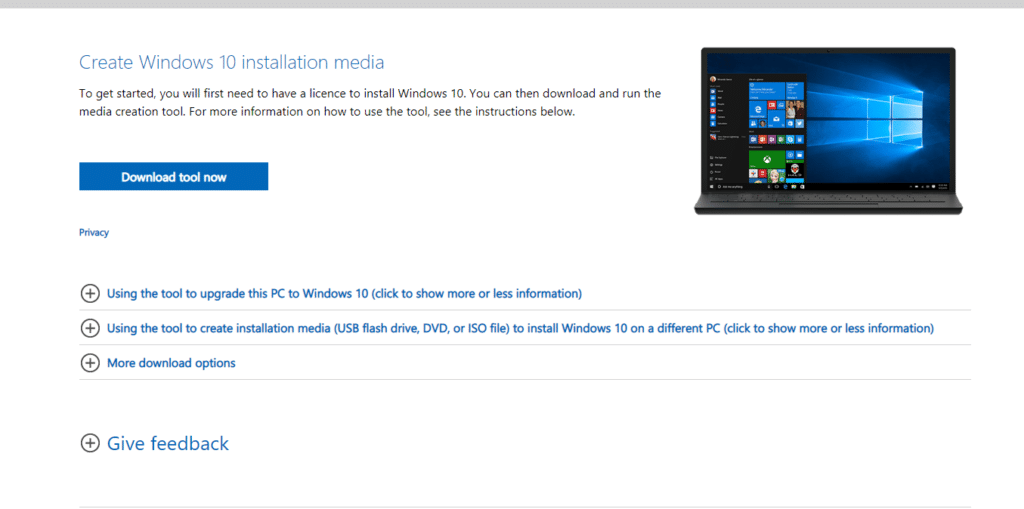
- Run the downloaded utility and accept the terms of the license agreement.

- Select Create Installation Media USB Flash Drive and click Next.

- After a while, a window for choosing the architecture, system language, and release will appear. By default, the recommended parameters are set by the current system’s characteristics, but by unchecking the checkbox, you can choose another language or bit – 64-bit or 32-bit. Keep in mind that one image contains all editions of Windows 10 at once: you cannot change anything in the release field; the choice of the professional or home version of the OS occurs during installation.

- If you unchecked “Use recommended settings for this computer” and choose a different bit or language, you will see a warning: “Make sure that the edition of the installation media matches the edition of Windows on the computer on which you will be using it.” Given that the image contains all editions of Windows 10 at this point, this warning should usually be ignored.
- Select “USB flash drive” if you want the program to burn the bootable installation USB flash drive by itself, or, if you wish, you can select “ISO file” to download the original Windows 10 image and burn it to USB or DVD yourself.

- Select the drive to be used from the list. Important: all data from a flash drive or external hard drive (from all its partitions) will be deleted. That being said, if you are creating an installation drive on an external hard drive or USB drive larger than 32 GB, you will need the information in the “More Information” section at the end of this manual.

- The Windows 10 installation files download will begin, and then – their recording to the USB flash drive: Creating an installation drive. These steps can take a long time.

- When finished, you will receive the message “USB flash drive ready,” you can close the utility and use the created drive.

When finished, you will have a ready-made drive with the original Windows 10 latest version, which is useful not only for a clean installation of the system on UEFI and Legacy (CSM) systems and for recovering it in case of failures. This was an official way to make a bootable USB flash drive for Windows 10.
Read also: KMODE Exception Not Handeled: Blue Screen In Windows 10- How To Fix It?
Using RUFUS to Write Installation USB
Rufus is an excellent program to quickly make a bootable USB flash drive for Windows 10 for very different systems.
In the program, it is enough to indicate the USB drive to which the recording will be made, click the “Select” button to specify the path to the ISO image with Windows 10 (you can also download Windows 10 directly in Rufus), and in the “Image parameters” field specify “Standard installing Windows.”

You should also pay attention to the choice of items in the “Partition scheme” and “Target system.” In general, the choice should be based on the following:
- For computers with a regular BIOS or installing Windows 10 on a computer with UEFI on the MBR disk, select “MBR” as the partition scheme and “BIOS or UEFI-CSM” in the target system.
- For computers with UEFI for installation on a GPT disk, select the appropriate parameters.
After that, click “Start” and wait until the files are copied to the USB flash drive.
Read also: Download vcruntime140_1.dll and fix the error in Windows 10
Bootable USB flash drive for Windows 10 using UltraISO
The UltraISO program, which serves to create, modify, and burn ISO images, is top-rated among users and, among other things, can be used to make a bootable USB flash drive for Windows 10.
The creation process consists of the following steps:
- Open the Windows 10 ISO image in UltraISO via the File – Open menu.

- In the menu item “Boot,” select the item “Burn hard disk image.”
- Using the wizard to write the installation image to a USB drive, you usually don’t need to change any parameters.
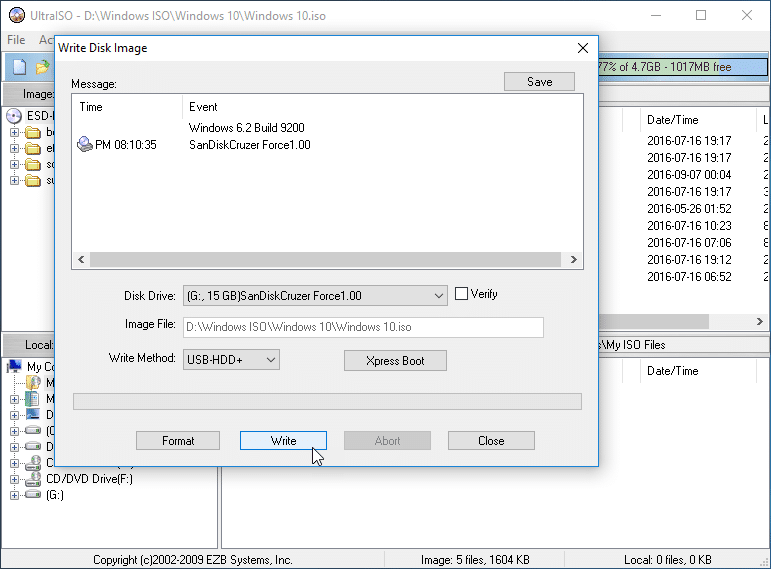
Windows 7 USB/DVD Download Tool
The official free utility from Microsoft, created to burn a Windows 7 image to a DVD or USB drive, has not lost its relevance even with the release of new OS versions – it can still be used if you need a distribution kit for installation.
The process of creating a bootable USB flash drive for Windows 10 in this program consists of 4 steps:
- Select the Windows 10 ISO image on your computer and click Next.
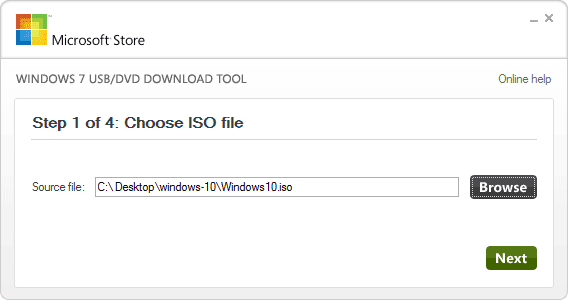
- Select a USB device – for a bootable USB stick or DVD – to create a disc.

- Select your USB storage device from the list. Click the “Begin copying” button (a warning will appear stating that all data from the flash drive will be deleted).

- Wait until the process of copying files is completed.

This completes the creation of the bootable USB flash drive for Windows 10, and you can start using it.
You can download Windows 7 USB/DVD Download Tool at the moment from the page on the official Microsoft website – https://www.microsoft.com/en-us/download/details.aspx?id=56485.
Read also: Hid.dll file is corrupted or missing in Windows 10
WinSetupFromUSB to create a multiboot flash drive
WinSetupFromUSB is one of my favorite programs for writing bootable and multiboot USBs. It can also be used for creating bootable USB flash drive for Windows 10, and with the help of the program, you can create one USB flash drive with different Windows 10 images.

The process (in the basic version, without taking into account the nuances) will consist of selecting a USB drive, setting the “Autoformat it with FBinst” checkbox (if the image is not added to those already on the flash drive), specifying the path to the Windows 10 ISO image (in the field for Windows Vista, 7, 8, 10) and clicking the Go button.
Additional Information
Some additional information that may be useful in the context of creating a bootable USB flash drive for Windows 10:
- The easiest way to boot from a flash drive is by using the Boot Menu, rather than changing the boot parameters in BIOS or UEFI. If the drive is displayed in the boot menu 2 times – with the UEFI (or EFI) mark and without it, for installation on a GPT disk, select with the mark, for installation on the MBR mark.
- Recently, I received several comments that when using an external USB disk (HDD) to create a bootable drive, it acquires the FAT32 file system and its volume changes: in this situation, after the installation files on the disk are no longer needed, click keys Win + R, enter diskmgmt.msc and in the disk management delete all partitions from this drive, then format it with the file system you need.
- Installation from a USB flash drive can be done not only by loading it into the BIOS but also by running the setup.exe file from the drive: the only condition, in this case, is that the bit depth of the installed system must match the installed one (and the computer must have a system no older than Windows 7). If you need to change 32-bit to 64-bit, then the installation should be done as described in the article Installing Windows 10 from a USB flash drive.
- After running the official Microsoft utility for creating an installation USB, the ESD, and Windows.BT folders may remain on the disk; they can be deleted.
In fact, to make an installation USB flash drive for Windows 10, all methods that work for Windows 8.1 are suitable, including through the command line, numerous programs for creating a bootable USB flash drive. So, if the options described above are not enough for you, you can safely use any other for the previous OS version.
